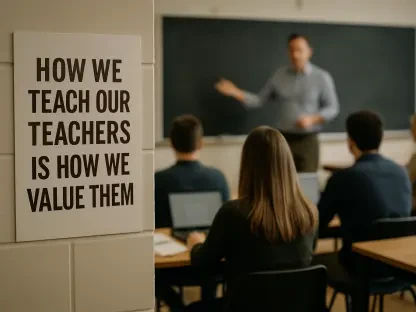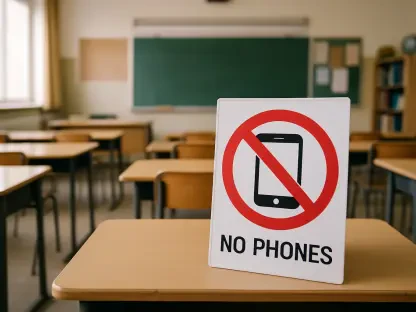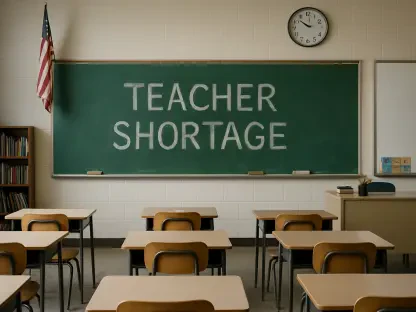Governor Wes Moore’s proposed changes to Maryland’s landmark education law, the Blueprint for Maryland’s Future, have sparked a wave of concern among educators and legislators. Moore’s plan includes cutting nearly one-fifth of the new funding that the state promised schools by 2029, raising questions about its potential impact on students living in poverty and immigrant students who are learning English. This proposal, framed by Moore as a temporary pause in the decade-long plan aimed at elevating Maryland schools to a state of excellence, contradicts the original intent of the Blueprint. The Blueprint was principally designed to bolster achievement among all students, directing substantial resources specifically towards the poorest-performing schools and those with significant numbers of impoverished children.
Potential Impact on School Districts
Despite Moore’s reassurances, neither his office nor the Maryland State Department of Education has released specific figures detailing how these cuts would affect individual school districts. Rough approximations by the state’s largest teachers’ union suggest that Baltimore City, along with Baltimore and Anne Arundel counties, may lose hundreds of millions of dollars each over a span of four years. This reduction in both state and local funding directly threatens districts with significant populations of poor students, exacerbating existing inequalities. Meanwhile, Moore has proposed redirecting $110 million annually toward new initiatives aimed at expanding and training the teacher workforce, ensuring children read proficiently by the third grade, and enhancing math instruction. While these initiatives are prioritized by Maryland State Superintendent of Schools Carey Wright, critics argue that they are not specifically targeted at aiding the most in-need students, who are the heart of the Blueprint’s original goals.
The lack of transparency regarding the exact figures and the criteria used for reallocating funds fuels concerns about equity and effectiveness. Many educators fear that the redirection of resources might benefit some programs while leaving the most vulnerable students without the support they crucially need. The focus on teacher training and student proficiency, although valuable, does little to address the intricate needs of impoverished communities where more intensive support measures might be required to bridge educational gaps. The debate highlights the tension between managing budget constraints and remaining faithful to the Blueprint’s comprehensive and inclusive objectives.
Political Motivations and Aspirations
A closer examination of the political landscape reveals that Moore’s budget adjustments might be influenced by his political aspirations. As he prepares for re-election next year and attracts national attention as a potential 2028 presidential candidate, these new education initiatives could serve as significant highlights of his program. Achievements in test score improvements and educational performance could bolster his political narrative, allowing him to claim credit for advancements under his tenure. Moore’s proposal comes against the backdrop of a strong Democratic commitment to the Blueprint, which dates back to before his election as governor and Carey Wright’s appointment as superintendent. Democrats in the legislature had vigorously committed to the 10-year plan designed to elevate Maryland’s schools, with the Blueprint meticulously developed by the Kirwan Commission. This panel, consisting of Marylanders who spent three years researching successful education systems globally, advocated for increased spending in areas believed to improve school performance substantively.
The political calculations surrounding Moore’s educational reforms raise questions about the prioritization of long-term educational excellence versus immediate political gains. The proposed budget adjustments may serve dual purposes: maintaining Moore’s political viability in a competitive landscape while attempting to rein in the increasingly expensive commitments envisaged by the Blueprint. As stakeholders assess the implications, the delicate balance between fiscal pragmatism and educational integrity looms large, ensuring the debate remains both deeply political and fundamentally educational.
Reactions from Educational Leaders and Legislators
Most educational leaders in the state, including superintendents, local school boards, and teachers, have not yet publicly reacted to Moore’s proposal. In private, however, they are reportedly scrutinizing the specific implications of each proposed cut and weighing whether to oppose a popular Democratic governor they may need to collaborate with in the future. This careful consideration underscores the intricate dynamics at play, as educators navigate between advocating for their students’ best interests and maintaining constructive relationships with state leadership. Amid this introspection, considerable skepticism has already emerged from legislators. Senate President Bill Ferguson, a Democrat from Baltimore City, expressed support for some of Moore’s proposed changes but highlighted the critical necessity of continuing investments in schools with concentrated poverty. Del. Ben Barnes, chair of the House Appropriations Committee, echoed this sentiment. Barnes emphasized the substantial progress made under the Blueprint over the past three years and voiced caution against pausing or rolling back any provisions given the demonstrated successes.
Legislative reactions reflect a broader concern about staying the course on the Blueprint’s ambitious goals while addressing practical fiscal constraints. The progress reported over recent years has generated a sense of momentum that many fear could be jeopardized by premature or shortsighted budgetary adjustments. This caution from legislative leaders underscores the need for a balanced approach that both safeguards vulnerable students and ensures the state’s financial sustainability. The debate illustrates the nuanced interplay between educational policy and legislative oversight, highlighting the stakes involved for Maryland’s future.
Achievements and Concerns in Baltimore Schools
During a meeting with the Baltimore City delegation, legislators showed enthusiasm for the achievements reported by Baltimore schools CEO Sonja Santelises under the new Blueprint funding. Santelises highlighted significant progress, noting that Black and Latino students are now more involved in Advanced Placement classes and that student participation in art, music, and middle school athletics has increased. These achievements indicate that the Blueprint’s targeted funding has begun to yield tangible benefits for underrepresented students, promoting greater engagement and educational enrichment.
However, Santelises also emphasized the potential setbacks Moore’s proposals could impose. She pointed out that the proposed budget cuts would reduce promised increases in Blueprint funding by about $400 million over the next four years. A significant portion of this reduction would impact schools with high numbers of poor students or those learning English as a second language. Santelises argued that redirecting funds to the state education department, rather than directly to the school districts, could undermine local efforts tailored to the unique needs of these communities. This potential redirection raises critical concerns about the ability of individual schools to maintain and build upon the progress already achieved through the Blueprint’s targeted investments.
The tension between celebrating current achievements and anticipating future challenges exemplifies the complexities inherent in Maryland’s educational landscape. The positive impacts of the Blueprint in Baltimore underscore the importance of sustained investment in proven programs, particularly those aimed at supporting marginalized communities. As debates continue, the experiences and voices of local educators and students will play a pivotal role in shaping the direction and priorities of Maryland’s education policies.
Historical Patterns of Funding Shortfalls
The proposed budget cuts continue Maryland’s historical pattern of making promises to children that remain unfulfilled, as noted by former Maryland State School Superintendent David Hornbeck. This persistent issue of funding shortfalls has consistently undermined educational opportunities and eroded hopes for the future among Maryland’s students. Moore’s spokesperson, Carter Elliott IV, conveyed the governor’s willingness to engage in ongoing discussions with the state legislature and other stakeholders to ensure the long-term success of the Blueprint for Maryland’s Future. The original plan intended to incrementally raise funding until an additional $3 billion annually was reached by 2029. However, projected costs have since increased, now estimating $4.3 billion by 2029 and $5.2 billion by 2030. Moore’s proposal aims to cut approximately $784 million from these rising costs by 2029, with local governments facing similarly smaller funding increases, making the overall reduction even more significant.
This historical context of funding shortfalls highlights the recurring challenges faced by Maryland’s educational system in balancing ambitious reform with fiscal reality. The gap between aspirational goals and practical implementation underscores a broader issue of sustained commitment and resource allocation. As state leaders navigate these complexities, the need for robust, transparent, and equitable funding mechanisms becomes ever more apparent. Ensuring that educational promises translate into tangible outcomes for all students, particularly the most vulnerable, remains a crucial yet challenging endeavor for Maryland.
Fiscal Sustainability and Future Funding Gaps
On closer examination, Moore’s budget adjustments might be driven by his political ambitions. Preparing for re-election next year and eyeing a potential 2028 presidential bid, these new education initiatives could spotlight his agenda. Improvements in test scores and educational performance would strengthen his political narrative, allowing him to claim advancements made during his tenure.
Moore’s proposal comes amid a strong Democratic commitment to the Blueprint, initiated before his election as governor and Carey Wright’s role as superintendent. Legislators had passionately backed this 10-year plan to elevate Maryland’s schools, crafted by the Kirwan Commission. This group of Marylanders spent three years studying successful global education systems, advocating for increased spending where it would meaningfully improve school performance.
The political considerations behind Moore’s educational reforms raise questions about prioritizing long-term educational excellence over immediate political gains. The proposed budget adjustments aim to maintain Moore’s political standing in a competitive arena while addressing the costly commitments set by the Blueprint. As stakeholders assess the implications, the balance between fiscal pragmatism and educational integrity remains critical, keeping the debate deeply political and fundamentally educational.









